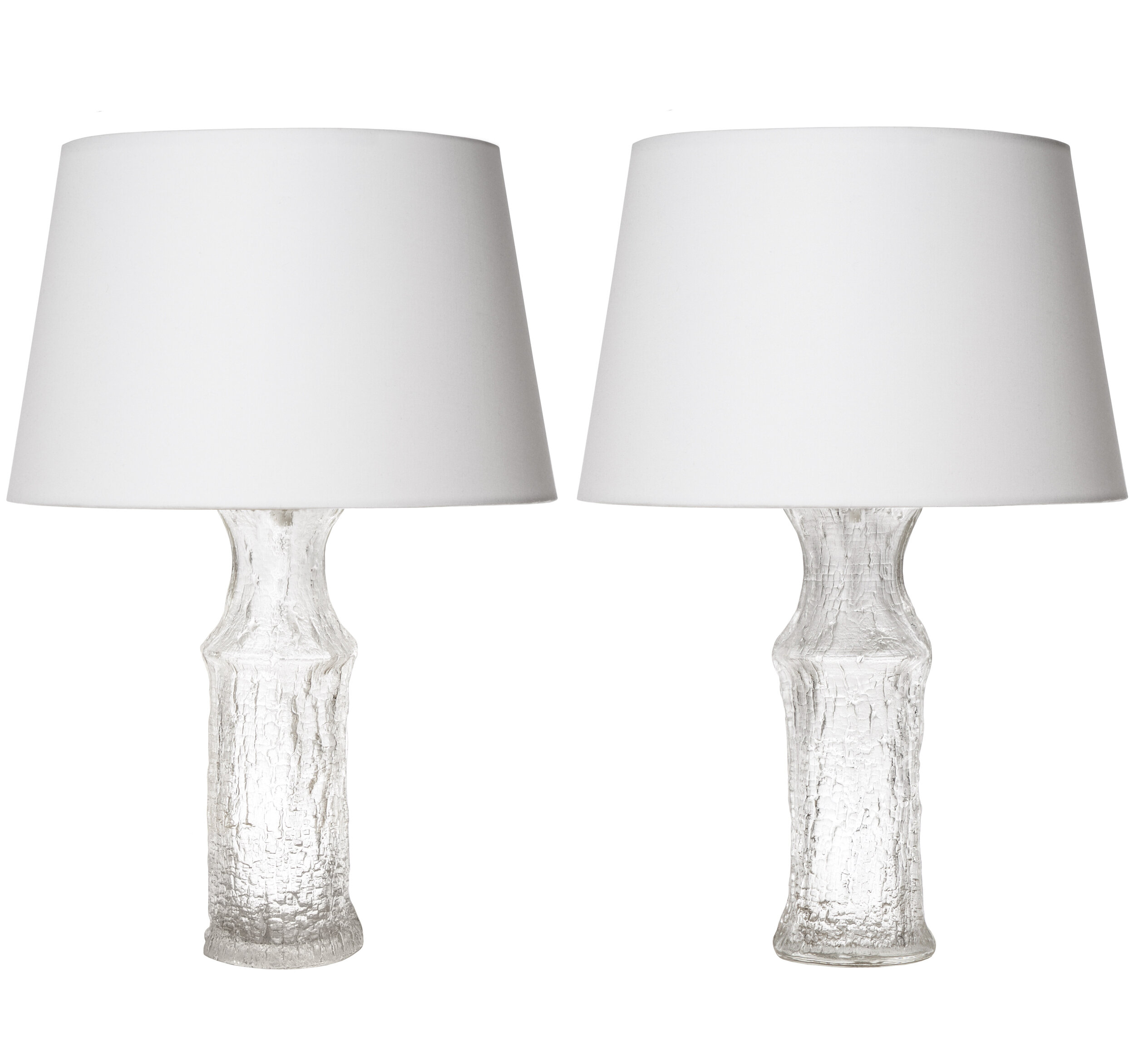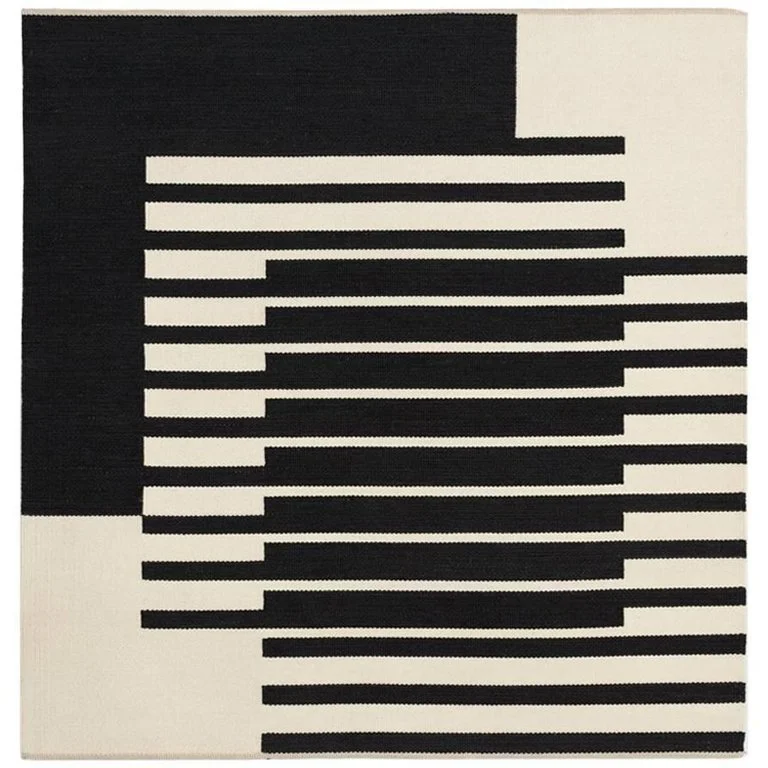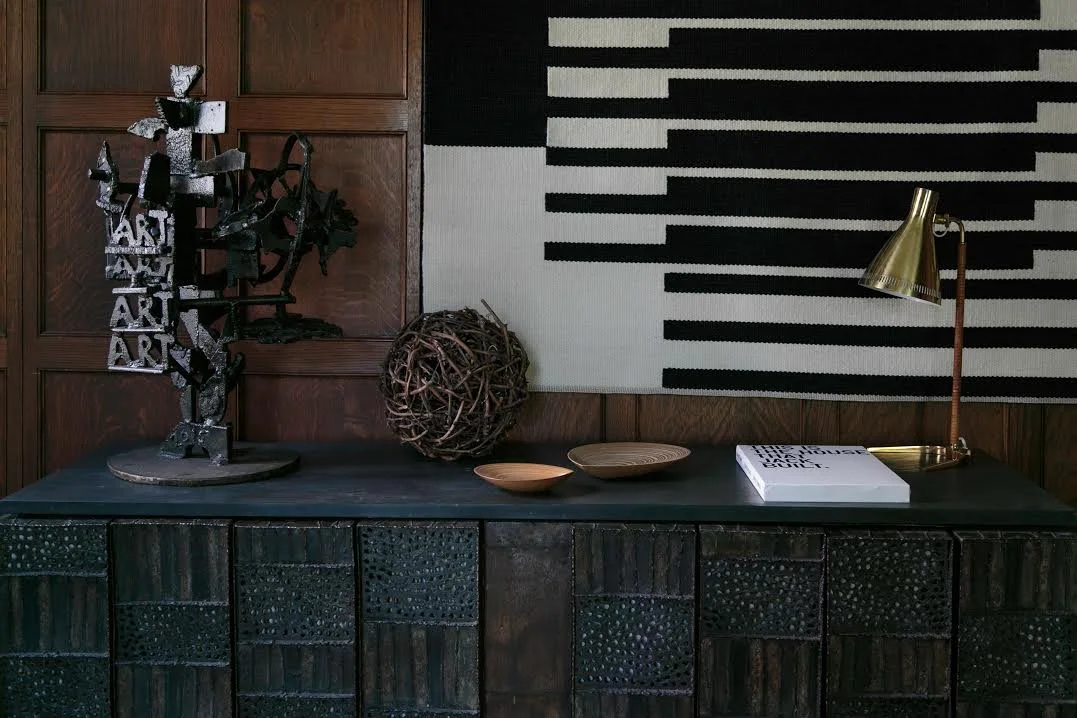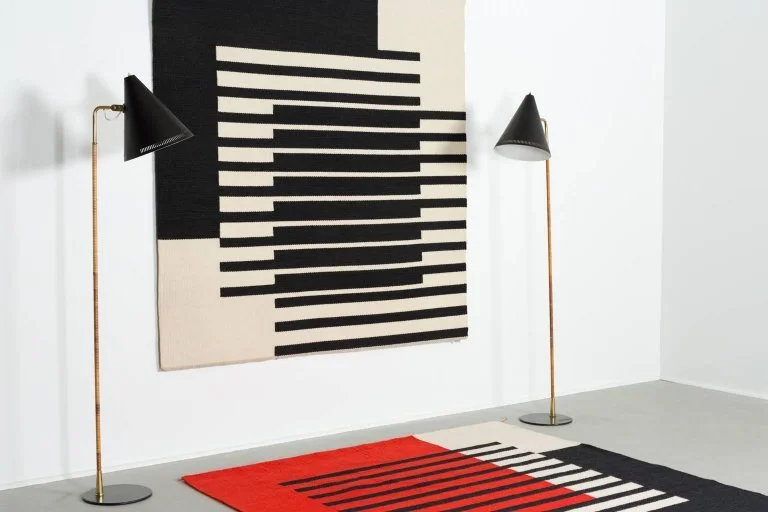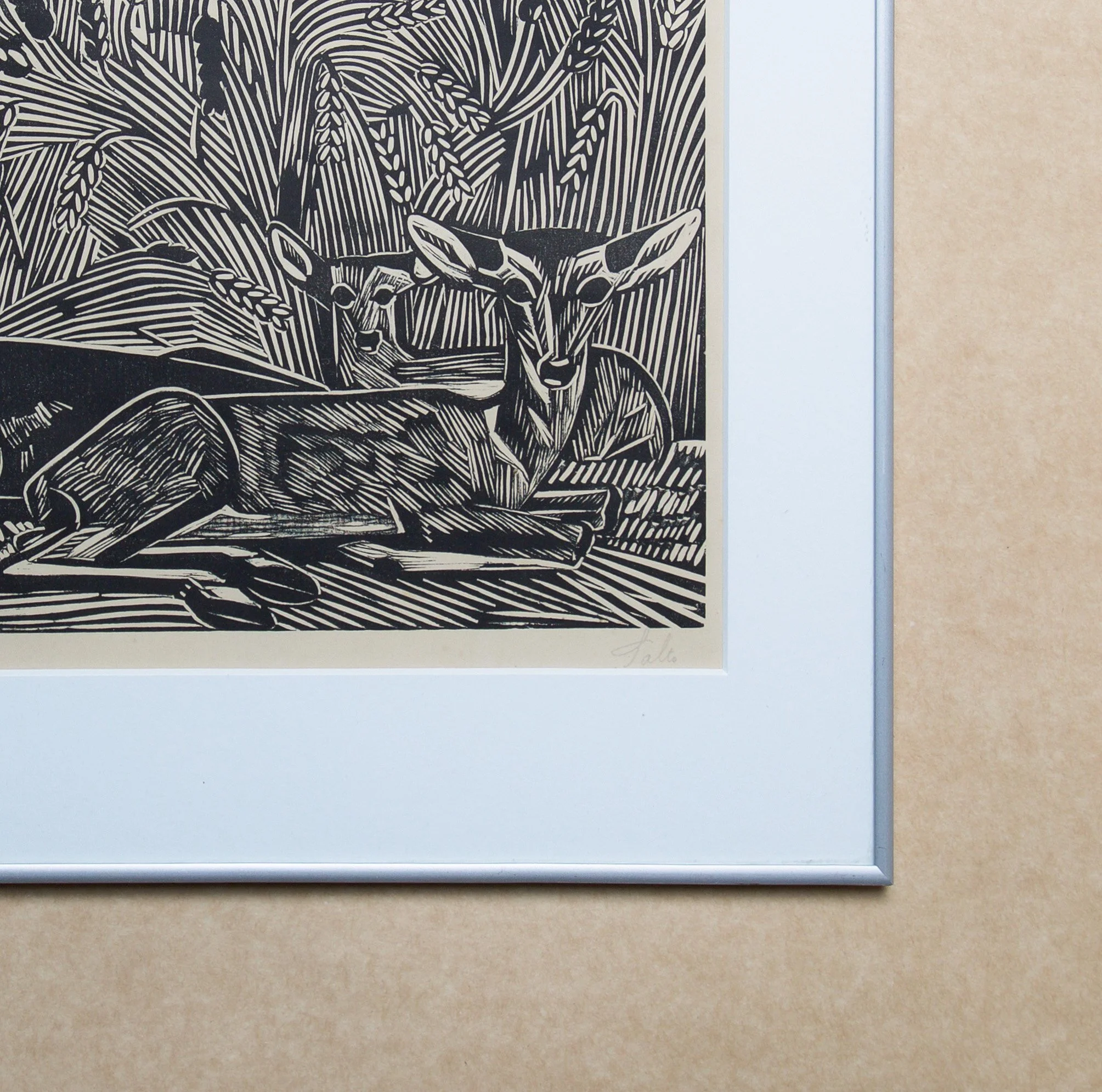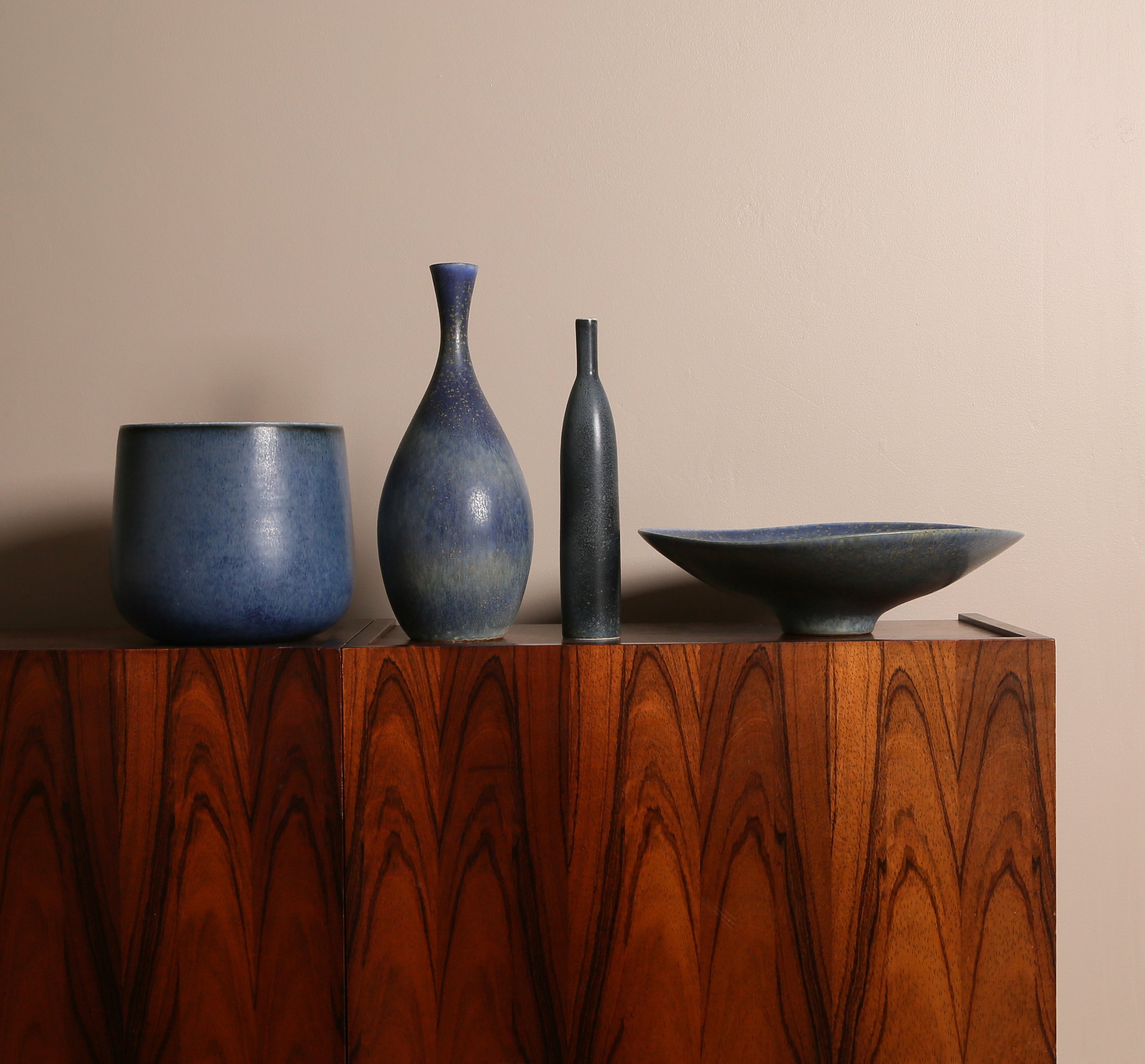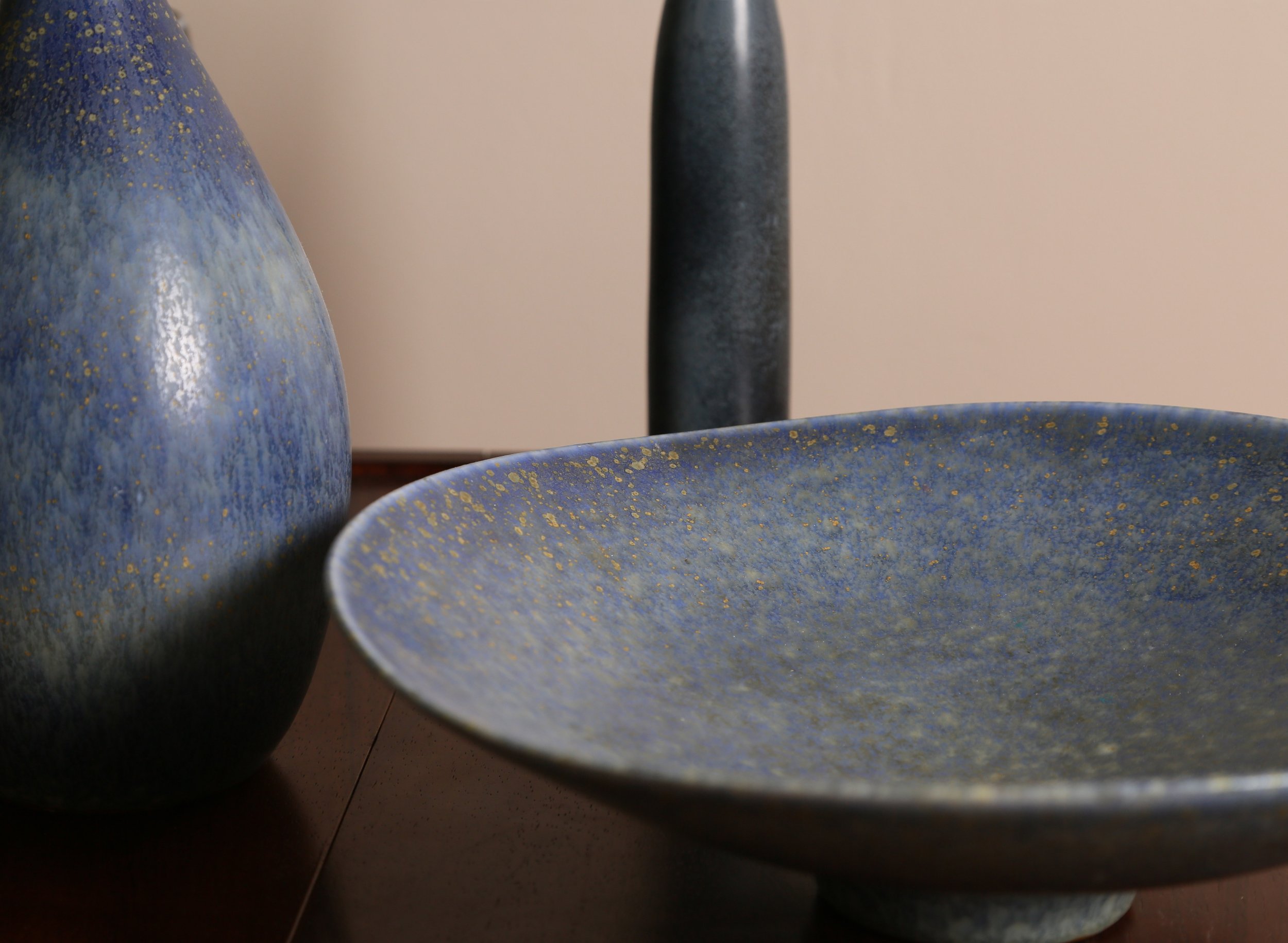Timo Sarpaneva Glass Table Lamps Model No 191 circa 1964
Pair of Model No191 table lamps by Finnish designer Timo Sarpaneva
circa 1964
Glass made in Iittala Oy, Finland
Lamp made in Luxus Ab, Sweden
Measures 51 x 34 cm each
Mold-blown glass base and fabric shade
The glass base manufactured by Iittala Oy Finland
Produced into a lamp exclusively by Luxus Ab in collaboration with Iittala Oy, Sweden circa 1964
Both items signed with manufacturer's label and model No.191 to underside
Each glass base unique due to its production process, where glass material is mouth-blown to a handmade and burned wooden mold, which keeps changing by some during the process and could be used only a limited number of times. This process is clearly visible in this pair, with both of the pieces having an unique character of their own.
Pair of Model No191 table lamps by Finnish designer Timo Sarpaneva
circa 1964
Glass made in Iittala Oy, Finland
Lamp made in Luxus Ab, Sweden
Measures 51 x 34 cm each
Mold-blown glass base and fabric shade
The glass base manufactured by Iittala Oy Finland
Produced into a lamp exclusively by Luxus Ab in collaboration with Iittala Oy, Sweden circa 1964
Both items signed with manufacturer's label and model No.191 to underside
Each glass base unique due to its production process, where glass material is mouth-blown to a handmade and burned wooden mold, which keeps changing by some during the process and could be used only a limited number of times. This process is clearly visible in this pair, with both of the pieces having an unique character of their own.
Pair of Model No191 table lamps by Finnish designer Timo Sarpaneva
circa 1964
Glass made in Iittala Oy, Finland
Lamp made in Luxus Ab, Sweden
Measures 51 x 34 cm each
Mold-blown glass base and fabric shade
The glass base manufactured by Iittala Oy Finland
Produced into a lamp exclusively by Luxus Ab in collaboration with Iittala Oy, Sweden circa 1964
Both items signed with manufacturer's label and model No.191 to underside
Each glass base unique due to its production process, where glass material is mouth-blown to a handmade and burned wooden mold, which keeps changing by some during the process and could be used only a limited number of times. This process is clearly visible in this pair, with both of the pieces having an unique character of their own.









